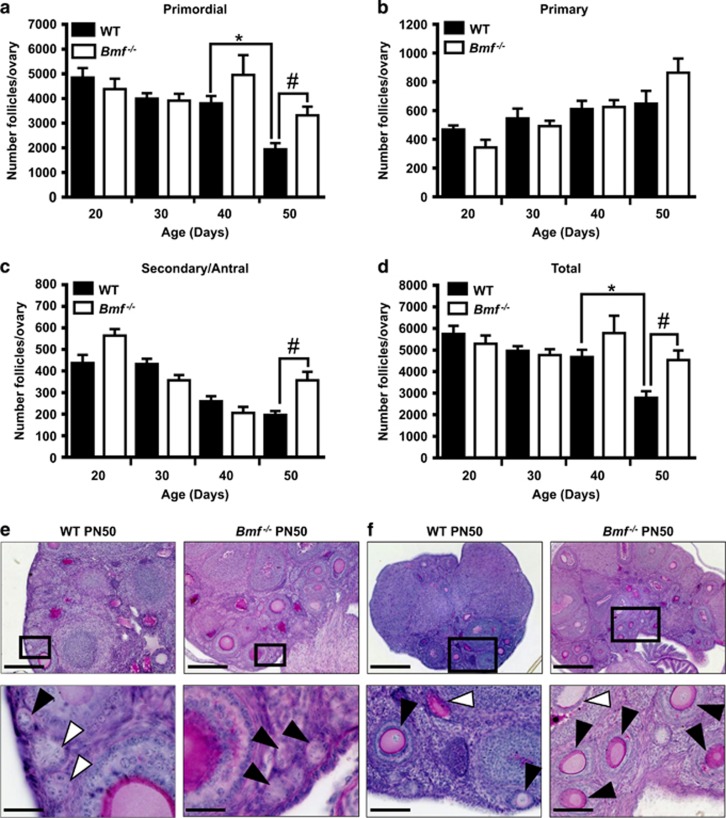Figure 1.
Follicle numbers in ovaries from WT and Bmf−/− female mice. Primordial (a), primary (b), secondary and antral follicles (c), and total follicles (d) were counted in the ovaries of WT and Bmf−/− mice at PN20, 30, 40 and 50 (n=6/age/genotype). Data are expressed as mean±S.E.M. *P<0.05 for comparison (two-tailed unpaired t-test) of follicle numbers between PN40 and 50 WT female mice. #P<0.05 for comparisons (two-tailed unpaired student’s t-test) between Bmf−/− and WT at PN50. For clarity, only statistical significance of select comparisons are shown. See Supplementary Tables 1 and 2 for statistical significance of all pairwise comparisons within a genotype. (e) Representative images of primordial follicles in PAS-stained ovarian sections from WT and Bmf−/− mice at PN50. Sections are 20 μM thick enabling primordial follicles to be clearly identified by focussing up and down in the z-axis. Black inset boxes in top images represent area shown below at higher magnification. Black arrow heads indicate primordial follicles. White arrow heads indicate empty follicles. Scale bars: Top images=100 μm, Bottom images=20 μm. (f) Representative images of secondary follicles in PAS-stained ovarian sections from WT and Bmf−/− mice at PN50. Black inset boxes in top images represent area shown below at higher magnification. Black arrow heads indicate secondary follicles. White arrow heads indicate atretic follicles. Scale bars: Top images=100 μm, Bottom images=20 μm

